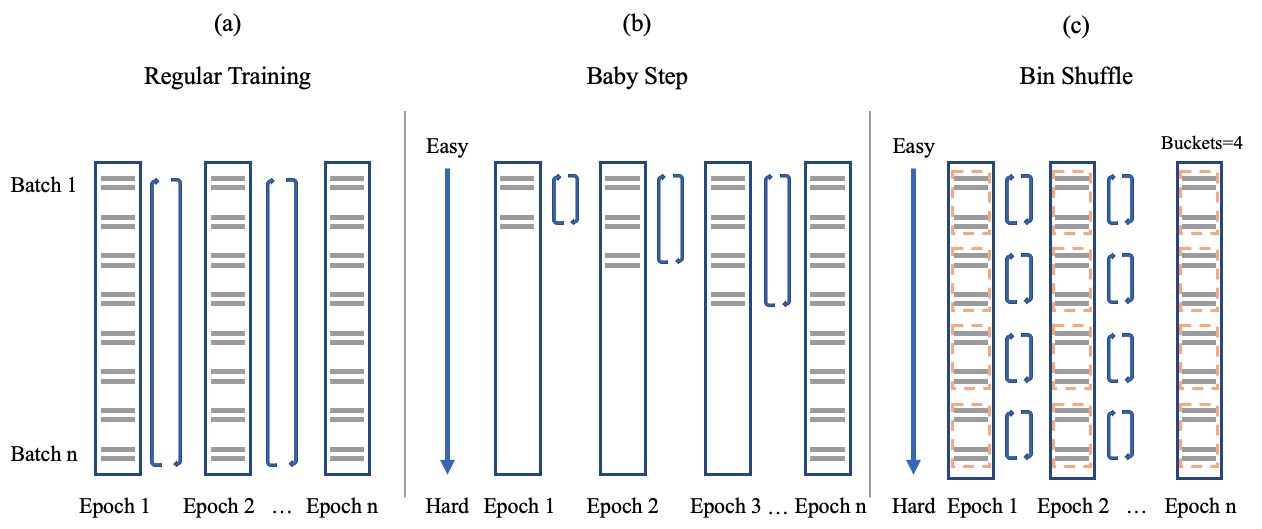CurriculumText is an experimental implementation of FastText that allows training with curriculum learning. The code implements a few basic difficulty measures and training schedulers to boost performance on most text classification tasks.
Used for the "Machine Learning for Language Processing" assignment at the University of Cambridge.
Requirements:
- Install Anaconda
- Run
conda env create -f environment.ymlandconda activate curriculumon completion - Download the Glove 50B vectors and save & extract them in the
data/directory
To reproduce the results, please run the following from the repository root:
For the full experiment run:
python -m curriculumtext --mode full
To run best-performing models across multiple seeds:
python -m curriculumtext --mode seed
You will see all experimental results as a long table stored in the data/results/ directory.
The jupyter notebook in notebooks/report.ipynb reads in the results table and aggregates them
into the format presented in the final report.
CurriculumText extends FastText by implementing easy CurriculumLearning through two key components:
- DifficultyMeasurer: What is a difficult document?
- TrainingScheduler: What degree of difficulty should the model be presented with at which stage during training?
Difficulty measures are implemented as DifficultyMeasure class in curriculum_text/difficulty.py.
.length(): Length of lemmatized document/sample; works well for Neural Translation.vector_distance(): Distance of the averaged GloVe embeddings of the lemmatized words in the document and the document label; works well for topic & sentiment classification.reverse_length(): Like.length(), but using "hard-to-easy" ordering, which is might prove useful if for tasks where longer documents are considered easier
A sensible further difficulty measure to implement would be to use parse tree depth to capture grammatical complexity.
Training schedules are implemented in the TraininScheduler class in curriculum/scheduler.py.
a) .train_full(): Regular training loop, shuffling samples after each epoch
b) .train_baby_step(): Progressively increasing sample difficulty through training epochs, with last 5 epochs training
on full data
c) .train_bin_shuffle(): Divides samples into equal-size bins ordered by difficulty. Bin order does not change across
epochs, but samples are shuffled within bins
